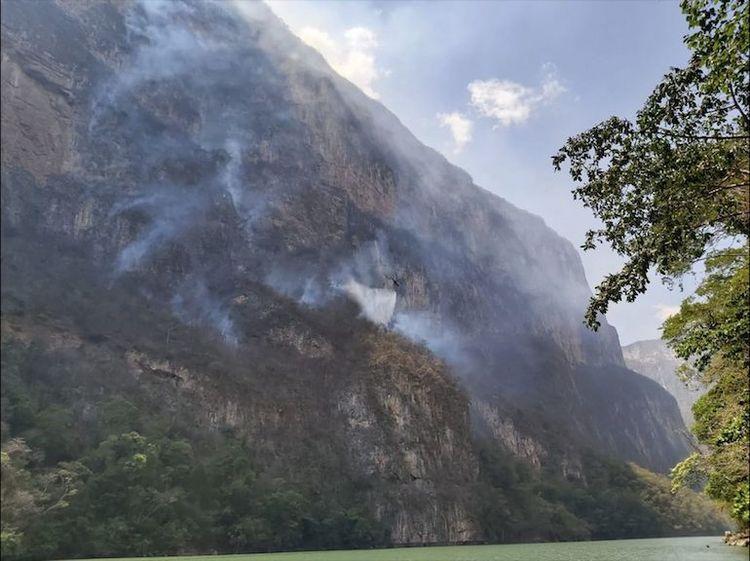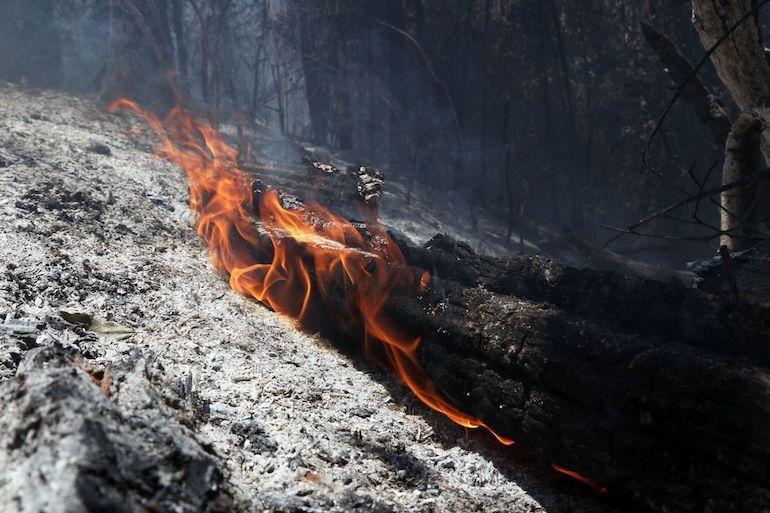The year began with the forests of La Sepultura, Chiapas, burning down. On January 4, for 17 hours, 20 hectares in the area of the municipality of Arriaga that belongs to this Protected Natural Area (ANP) were consumed by flames, according to information from the National Forestry Commission (Conafor).
The La Sepultura fire was not the only one. Until May 5, between those that occurred in ANP and other unprotected wooded areas, there are 171 records throughout the state. Although the 26,588 hectares burned are smaller than those of Morelos and the State of Mexico, Chiapas is ranked first in the country by Conafor due to the intensity of the damage.
“Here in the state, the areas that burn the most are protected areas... as they are areas where their management is prohibited, the surrounding people are not involved in the fires...”, said René Gómez Orantes, representative of Bosques and Governance A.C., a group dedicated to promoting forest management and restoration in the state.
In 2021, Chiapas closed with 278 forest fires affecting 47,000 hectares, of which 34% belonged to an ANP. The previous year, in 2020, of 319 accidents, 49% was also a protected area. The most common are La Sepultura, La Encrucijada, La Concordia and Cañón del Sumidero, according to information obtained through transparency.
Conafor directly lists illegal activities, as well as agricultural activities, among the main causes of forest fires at the national level. These are followed by bonfires, smokers, the burning of garbage dumps and livestock activities.
But for activists and organizations in Chiapas, the causes attributed to forest fires go beyond direct actions. From the voracious effects of climate change to the budget allocated to environmental protection institutions in recent years and, in particular, the land use change that is based on using forests for other non-forestry activities.
“Although the nature of Chiapas is forested, schemes for the development of agriculture and livestock have been promoted and this has had an impact on the forests. Basically, at the root of problems such as deforestation, fire and illegal logging, is land use change,” Gómez Orantes explained.
Floors and budget
Since mid-2018, amendments have been made to Article 97 of the General Law on Sustainable Forest Development. The objective is to prohibit land use change in burned areas no more than 20 years have passed since the burning.
However, researchers at the Australian National University found that soils need up to 80 years to recover from a fire.
“We have a land use change phenomenon that is associated with deforestation. When forest cover is removed and replaced by other land use such as pastures, buildings, highly profitable crops or some other economic activity, it can be linked to fires,” said engineer Gustavo Sánchez Valle, president of the Mexican Network of Peasant Forest Organizations (MOCAF).
For example, in Chiapas, corn production in regions such as La Frailesca and Villa Corzo coincides with those most affected by fires resulting from agriculture.
In Mexico, land use changes are granted by the Secretariat of Environment and Natural Resources (Semarnat), in a procedure that includes the technical study of the forest area that will be requested. The authorization can include everything from agricultural activities to removing areas of vegetation for construction.
However, there are also records of changes in forest soils in a clandestine manner.
“We have had a decrease in support for forest policy, which has an impact on the number of people on the part of Semarnat to follow up on requests for authorization of management programs... and the decline in inspection and surveillance capacities is also a result of this situation...”, added engineer Gustavo Sánchez.
According to data from Conafor, in 2015, a budget of 1,007 million pesos was allocated to the Fire Management program. While by 2022 it received 695 million, representing a drop of 30.9%.
Not only has there been a cut in terms of fire programs, the budget for institutions dedicated to the environment, such as Conafor, went from 3 billion pesos in 2018 to 2,440 million pesos, with a decrease of 18.6%. In the case of Semarnat, the decrease is from 49 billion to 39 billion in the same period, or 20.4%.
For its part, the current federal government policy focuses on Sowing Life, a program that consists of granting 5 thousand pesos per month in exchange for planting and caring for trees in plots.
“Sowing Life is just another policy in terms of social assistance. From my point of view, there is tremendous involuntary and voluntary confusion on this issue, but the truth is that direct forest investment, which is channeled through the National Forestry Commission, has been decreasing,” said the president of Red MOCAF.
“But the quality of public investment is also important. Conafor also had moments of great resource, but much of it was spent on issues of passive conservation or reforestation that were not necessarily well focused, for example, the time when it wanted to break a Guinness record for reforestation. What there should be is a balanced public policy,” Sánchez added.

Fire in the Sumidero Canyon National Park, 2020. Photo: SEMAR/Cuartoscuro.com
Land for the community
For forest communities in Chiapas, the solution to forest fires lies in a community management plan, which is summarized in involving those who inhabit the forests in their care and use.
“We have said that the person responsible for caring for forests and their resources is the owner of the land, not the government. And what do we want from the government? In any case, to train, to equip people, to guide, to promote management and promote forest use, to prevent burning in agricultural areas or illegal activity,” explained René Orantes, from Bosques and Governance A.C.
Gustavo Sánchez agrees that forest community management plans open up the possibility of improvement, especially in a country like Mexico where most of its natural areas are in ejidos and communities.
“We have a relatively old scheme that we import from the United States from natural areas without people and many times what has been done with some ANP policies is to prevent them from using their livelihoods. Under this concept of passive conservation, what we have is that there is no investment in the forest to sustain it, to manage it properly,” Sánchez explained.
An example of this community management plan is in the Niños Heroes community, municipality of Cintalapa, where the use and sale of pine resin caused its inhabitants to organize to protect the place from soil changes or illegal logging.
In the same municipality of Chiapas, the indigenous community in Monte Sinaí decided to modify the tradition of logging and planting coffee for sustainable management that led them to receive certification from the Forest Stewardship Council.
“It is also important to have a technical team that is sustained over time because that gives a lot of operational capacity in the field and that is personnel who know the regions and this can only be achieved when there is coordinated work between the Federation, the states, the municipalities and their inhabitants,” said Sánchez.



Comentarios (0)